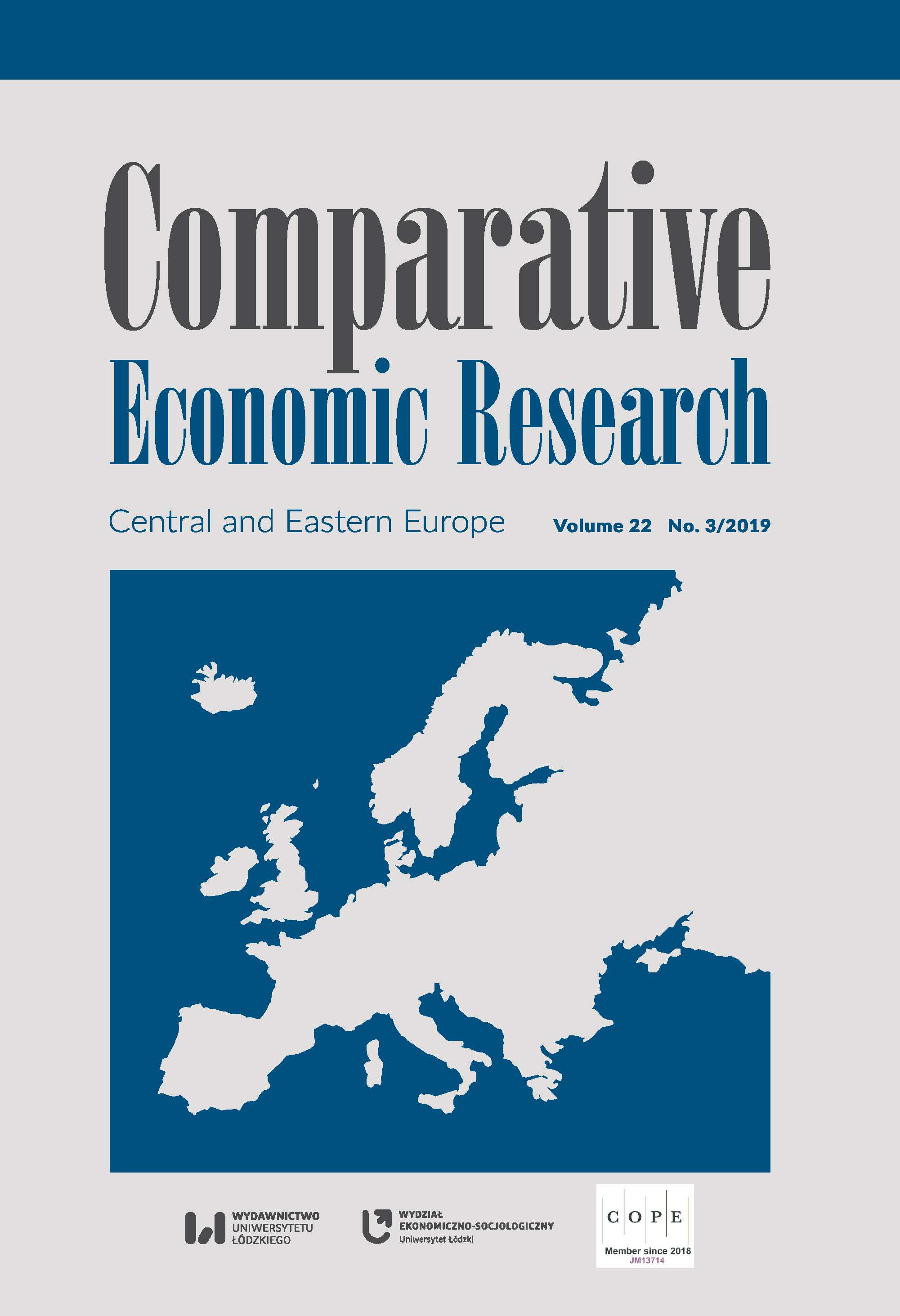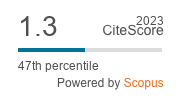The Effects of Selected Macroeconomic Variables on Tourism Demand for the South Moravian Region of the Czech Republic from Germany, Poland, Austria, and Slovakia
DOI:
https://doi.org/10.2478/cer-2019-0021Keywords:
tourism demand, real exchange rate, industrial production index, crude oil price, VECM, cointegrationAbstract
International tourism is one of the most important sectors of the open economy. The aim of this paper is to investigate the effects that income as gross domestic product, tourism price as the real exchange rate, and travel cost as the price of Brent crude oil have on inbound tourism demand (tourist arrivals) from Poland, Slovakia, Germany, and Austria in the South Moravian Region of the Czech Republic over the period 2002:M1–2018:M5. The number of Polish, German, Slovak and Austrian tourists accommodated in collective accommodation establishments within the South Moravian Region as a dependent variable are considered. To achieve this aim, cointegration analysis under the VECM approach is applied. The results show that Slovak, Polish, Austrian and German tourists respond positively to their income changes. Austrian and Slovak tourists respond negatively to changes in tourism prices in the Czech Republic. Tourists from Germany and Poland do not respond to changes in the Czech price level since their elasticity coefficients are non‑significant. German, Austrian and Slovak tourists respond negatively to transportation cost changes. Polish tourists do not respond to transport cost changes since their elasticity coefficient is non‑significant.
Downloads
References
Asemota, O.J., Bala, D.A. (2012), Modelling Tourism Demand in Japan using Cointegration and Error Correction Model, “International Review of Business Research Papers”, Vol. 8, No. 2.
Google Scholar
Babecka, O. (2013), Competitiveness and determinants of tourism, [in:] L. Komarek (ed.), Global economic outlook‑July, https://www.cnb.cz/miranda2/export/sites/www.cnb.cz/en/monetary_policy/geo/geo_2013/gev_2013_07_en.pdf (accessed: 28.09.2018).
Google Scholar
Barros, C.P., Machado, L.P. (2010), The length of stay in tourism, “Annals of Tourism Research”, Vol. 37, No. 3, DOI: 10.1016/j.annals.2009.12.005.
Google Scholar
Brida, J.G., Scuderi, R. (2012), Determinants of tourist expenditure: a review of microeconometric models, Working paper Munich Personal RePEc Archive, https://mpra.ub.uni‑muenchen.de/38468/1/MPRA_paper_38468.pdf (accessed: 17.09.2018).
Google Scholar
Dickey, D., Fuller, W. (1979), Distribution of the estimators for autoregressive time series with a Unit Root, “Journal of the American Statistical Association”, Vol. 74, No. 366.
Google Scholar
Dritsakis, N. (2004), Tourism as a Long‑run Economic Growth Factor: An Empirical Investigation for Greece using Causality Analysis, “Tourism Economics”, Vol. 10, No. 3, DOI: 10.5367/0000000041895094.
Google Scholar
Enders, W. (2010), Applied econometric time series, Wiley, Hoboken.
Google Scholar
Falk, M. (2015), The sensitivity of tourism demand to exchange rate changes: an application to Swiss overnight stays in Austrian mountain villages during the winter season, “Current Issues in Tourism”, Vol. 18, No. 1, DOI: 10.1080/13683500.2013.810610.
Google Scholar
Garin‑Munoz, T. (2006), Inbound International Tourism to Canary Islands: A Dynamic Panel Data Model, “Tourism Management”, Vol. 27, No. 2, DOI: 10.1016/j.tourman.2004.10.002.
Google Scholar
Garratt, A., Lee, K., Pesaran, M.H., Shin, Y. (2012), Global and national macroeconometric modelling: A long‑run structural approach, Oxford University Press, London.
Google Scholar
Gautam, B.P. (2014), Economic Dynamics of Tourism in Nepal: A VECM Approach, “Munich Personal RePEc Archive”, https://mpra.ub.uni‑muenchen.de/58102/8/MPRA_paper_58102.pdf (accessed: 21.07.2018).
Google Scholar
Gerhard, R., Sedillot, F. (2003), Short‑Term Estimates of Euro Area Real GDP by Means of Monthly Data, “European Central Bank Working Paper Series’ https://www.ecb.europa.eu/pub/pdf/scpwps/ecbwp276.pdf?ef693dab796b365f5625a07d2dfcc152 (accessed: 16.09.2018).
Google Scholar
Gokovali, U., Bahar, O., Kozak, M. (2007), Determinants of Length of Stay: A Practical Use of Survival Analysis, “Tourism Management”, Vol. 28, No. 3, DOI: 10.1016/j.tourman.2006.05.004.
Google Scholar
Hor, C. (2015), Modelling International Tourism Demand in Cambodia: ARDL Model, “Review of Integrative Business &Economics Research”, Vol. 4, No. 4.
Google Scholar
Johansen, S., Juselius, K. (1990), Maximum Likelihood Estimation and Inference on Cointegration with Application to the Demand for Money, “Oxford Bulletin of Economics and Statistics”, Vol. 52, No. 2.
Google Scholar
Lin, H., Liu, L.‑M., Tseng, Y.‑H., Su. Y.‑W. (2011), Taiwan’s International tourism: a Time Series Analysis with Calendar Effects and Joint Outlier Adjustments, “International Journal of Tourism Research”, Vol. 13, No. 1, DOI: 10.1002/jtr.779. Martinez‑Garcia, E., Raya, J.M. (2008), Length of Stay for Low‑Cost Tourism, “Tourism
Google Scholar
Managemen”, Vol. 29, No. 6, DOI: 10.1016/j.tourman.2008.02.011.
Google Scholar
Massidda, C., Etzo, I. (2012), The Determinants of Italian Domestic Tourism: A Panel Data Analysis, “Tourism Management”, Vol. 33, No. 3, DOI: 10.1016/j.tourman. 2011.06.017.
Google Scholar
Muchapondwa, E., Pimhidzai, O. (2011), Modelling International Tourism Demand for Zimbabwe, “International Journal of Business and Social Science”, Vol. 2, No. 2.
Google Scholar
Ongan, S., Isik, C., Ozdemir, D. (2017), The Effects of Real Exchange Rates and Income on International Tourism Demand for the USA from Some European Union Countries, “Economies”, Vol. 5, No. 4, DOI: 10.3390/economies5040051.
Google Scholar
OSN (2010), International Recommendations for Tourism Statistics 2008, http://unstats.un.org/unsd/publication/Seriesm/SeriesM_83rev1e.pdf (accessed: 14.08.2018).
Google Scholar
Seetaram, N. (2010), Use of dynamic panel cointegration approach to model international arrivals to Australia, “Journal of Travel Research”, Vol. 49, No. 1, DOI: 10.1177/0047287509346992.
Google Scholar
Seo, J.H., Park, S.Y., Yu, L. (2009), The Analysis of the Relationships of Korean Outbound Tourism Demand, “Tourism Management”, Vol. 30, No. 1, DOI: 10.1016/j.tourman.2008.10.013.
Google Scholar
Sims, C.A. (1980), Macroeconomics and Reality, “Econometrica”, Vol. 48, No. 1.
Google Scholar
Song, H., Li, G. (2008), Tourism Demand Modelling and Forecasting: a Review of Recent Research, “Tourism Management”, Vol. 29, No. 2, DOI: 10.1016/j.tourman. 2007.07.016.
Google Scholar
Song, H., Kim, J.H., Yang, S. (2010), Confidence intervals for tourism demand elasticity, “Annals of Tourism Research”, Vol. 37, No. 2, DOI: 10.1016/j.annals.2009.10.002.
Google Scholar
Song, H., Witt, S., Li, G. (2008), The Advanced Econometrics of Tourism Demand, Taylor & Francis, New York.
Google Scholar
Surugiu, C., Leitao, N.C., Surugiu, M.R. (2011), A Panel Data Modelling of International Tourism Demand: Evidences for Romania, “Economic Research‑Ekonomska Istraživanja”, Vol. 24, No. 1, DOI: 10.1080/1331677X.2011.11517450.
Google Scholar
United Nations (2010), International Recommendations for Tourism Statistics 2008, http://unstats.un.org/unsd/publication/Seriesm/SeriesM_83rev1e.pdf (accessed: 19.06.2018).
Google Scholar
UNWTO (2018), UNWTO Tourism Highlights, https://www.eunwto.org/doi/pdf/10.18111/9789284419876 (accessed: 29.07.2018).
Google Scholar
Wong, K., Song, H., Chon, K.K. (2006), Bayesian Models for Tourism Demand Forecasting, “Tourism Management”, Vol. 27, No. 5, DOI: 10.1016/j.tourman.2005.05.017.
Google Scholar
Downloads
Published
How to Cite
Issue
Section
License

This work is licensed under a Creative Commons Attribution-NonCommercial-NoDerivatives 4.0 International License.











